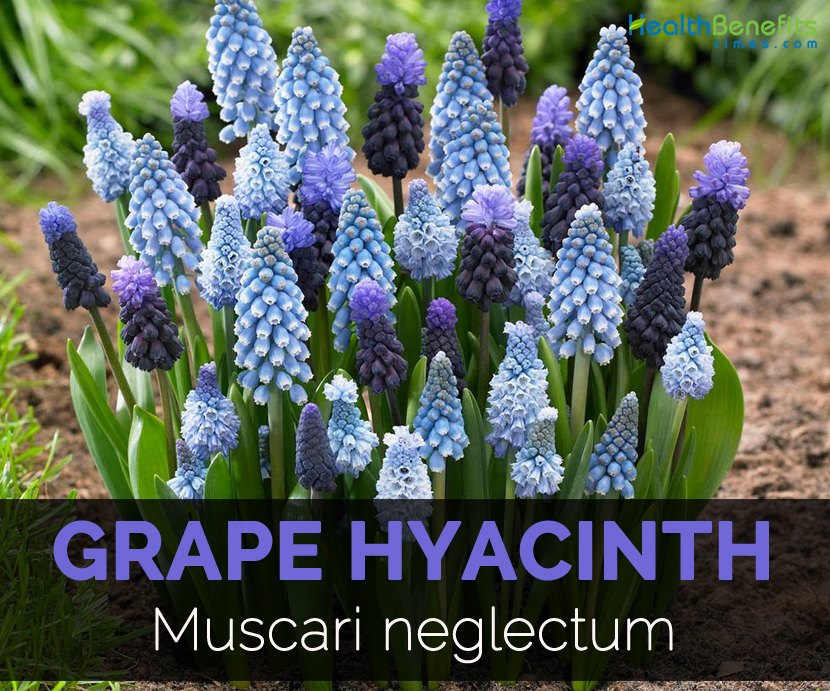| Grape Hyacinth Quick Facts | |
|---|---|
| Name: | Grape Hyacinth |
| Scientific Name: | Muscari neglectum |
| Origin | It is inherent to Southwestern Asia and the Mediterranean region. |
| Shapes | Broadly ovate to orbicular, 5-9 × 8-10 mm |
Plant
The plant is herbaceous which grows to 25 cm with 2-3 by 2-2.5 cm ovoid bulbs covered with dark brown tunic. Leaves are linear to lanceolate measuring 5 to 35 cm long and 0.25 to 0.75 cm wide. Scapes are 25 cm long. Flowers are blue to purplish on 1 to 5 mm nodding pedicles. Sterile flowers are smaller and paler in comparison to fertile ones. Perianth tube is ovoid to oblong-urceolate or cylindric measuring 3 to 7 mm. The plant bears capsule as a fruit which is broadly ovate to orbicular, 5-9 × 8-10 mm having tip rounded or shortly emarginated.
How to Eat
- The blue flower buds and bulbs are used in Mediterranean cuisine.
- Flower buds and flowers are pickled in vinegar.
References:
https://www.itis.gov/servlet/SingleRpt/SingleRpt?search_topic=TSN&search_value=503892#null
https://www.cabi.org/isc/datasheet/115673
https://en.wikipedia.org/wiki/Muscari_neglectum
https://plants.usda.gov/core/profile?symbol=MUNE
Comments
comments
